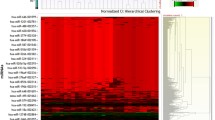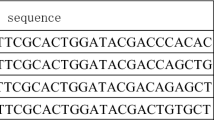Abstract
TBI is the main cause of death and disability in individuals aged 1–45 in Western countries. One of the main challenges of TBI at present is the lack of specific diagnostic biomarkers, especially for mild TBI (mTBI), which remains currently difficult to value in clinical practice. In this context MiRNAs may be important mediators of the profound molecular and cellular changes that occur after TBI in both the short and the long term. Recently, plasma miRNAs profiling in human TBI, have revealed dynamic temporal regulation of miRNA expression within the cortex. Aim of this study was to select a specific miRNAs panel for mTBI, by focusing the research on the prognostic meaning of miRNAs in the hours following the trauma, in order to be able to use this MIRNAs as potential biomarkers useful for monitoring the follow up of mild TBI. Serum levels of 17 miRNAs were measured by RT-quantitative polymerase chain reaction (qPCR) in 20 patients with mTBI at three different time-points (0 h, 24 h, 48 h) and in 10 controls. For 15 miRNAs we found a significant differences in the comparison among the three time points: for each of these miRNAs the values were greater at baseline and progressively reduced at 24 h and 48 h. These data allow us to consider the miRNAs included in panel as sensitive and specific biomarkers for mTBI, useful in monitoring the post-trauma period.




Similar content being viewed by others
References
Vella MA, Crandall ML, Patel MB (2017) Acute management of traumatic brain injury. Surg Clin North Am 97:1015–1030. https://doi.org/10.1016/j.suc.2017.06.003
Langlois JA, Rutland-Brown W, Wald MM (2006) The epidemiology and impact of traumatic brain injury: a brief overview. J Head Trauma Rehabil 21:375–378. https://doi.org/10.1097/00001199-200609000-00001
Stocchetti N, Maas AI (2014) Traumatic intracranial hypertension. N Engl J Med 371:972. https://doi.org/10.1056/NEJMra1208708
Werner C, Engelhard K (2007) Pathophysiology of traumatic brain injury. Br J Anaesth 99:4–9. https://doi.org/10.1093/bja/aem131
Ganau M, Prisco L (2013) Comment on "neuromonitoring in traumatic brain injury". Minerva Anestesiol 79:310–311
Di Pietro V, Ragusa M, Davies D et al (2017) MicroRNAs as novel biomarkers for the diagnosis and prognosis of mild and severe traumatic brain injury. J Neurotrauma 34:1948–1956. https://doi.org/10.1089/neu.2016.4857
Thelin E, Al Nimer F, Frostell A, Zetterberg H, Blennow K, Nyström H, Svensson M, Bellander BM, Piehl F, Nelson DW (2019) A serum protein biomarker panel improves outcome prediction in human traumatic brain injury. J Neurotrauma 36(20):2850–2862. https://doi.org/10.1089/neu.2019.6375
Posti JP, Takala RSK, Lagerstedt L, Dickens AM, Hossain I, Mohammadian M, Ala-Seppälä H, Frantzén J, van Gils M, Hutchinson PJ, Katila AJ, Maanpää HR, Menon DK, Newcombe VF, Tallus J, Hrusovsky K, Wilson DH, Gill J, Sanchez JC, Tenovuo O, Zetterberg H, Blennow K (2019) Correlation of blood biomarkers and biomarker panels with traumatic findings on computed tomography after traumatic brain Injury. J Neurotrauma 36(14):2178–2189. https://doi.org/10.1089/neu.2018.6254
Valadi H, Ekström K, Bossios A, Sjöstrand M, Lee JJ, Lötvall JO (2007) Exosome-mediated transfer of mRNAs and microRNAs is a novel mechanism of genetic exchange between cells. Nat Cell Biol 9:654–659. https://doi.org/10.1038/ncb1596
Friedman R, Farh KK, Burge CB, Bartel DP (2009) Most mammalian mRNAs are conserved targets of microRNAs. Genome Res 19:92–105. https://doi.org/10.1101/gr.082701.108
Lim LP, Lau NC, Garrett-Engele P et al (2005) Microarray analysis shows that some microRNAs downregulate large numbers of target mRNAs. Nature 433:769–773. https://doi.org/10.1038/nature03315
Baek D, Villén J, Shin C, Camargo FD, Gygi SP, Bartel DP (2008) The impact of microRNAs on protein output. Nature 455:64–71. https://doi.org/10.1038/nature07242
Watson CN, Belli A, Di Pietro V (2019) Small Non-coding RNAs: New Class of Biomarkers and Potential Therapeutic Targets in Neurodegenerative Disease. Front Genet 10:364. https://doi.org/10.3389/fgene.2019.00364
Keller A, Rounge T, Backes C et al (2017) Sources to variability in circulating human miRNA signatures. RNA Biol 14:1791–1798. https://doi.org/10.1080/15476286.2017.1367888
Jung HJ, Su Y (2014) Circulating miRNAs in ageing and ageing-related diseases. J Genet Genomics 41:465–472. https://doi.org/10.1016/j.jgg.2014.07.003
Lei P, Li Y, Chen X, Yang S, Zhang J (2009) Microarray based analysis of microRNA expression in rat cerebral cortex after traumatic brain injury. Brain Res 1284:191–201. https://doi.org/10.1016/j.brainres.2009.05.074
Orrison WW, Hanson EH, Alamo T et al (2009) Traumatic brain injury: a review and high-field MRI findings in 100 unarmed combatants using a literature based checklist approach. J Neurotrauma 26:689–701. https://doi.org/10.1089/neu.2008.0636
Redell JB, Liu Y, Dash PK (2009) Traumatic brain injury alters expression of hippocampal microRNAs: potential regulators of multiple pathophysiological processes. J Neurosci Res 87:1435–1448. https://doi.org/10.1002/jnr.21945
Bartels CL, Tsongalis GJ (2009) MicroRNAs: novel biomarkers for human cancer. Clin Chem 55:623–631. https://doi.org/10.1373/clinchem.2008.112805
Vemuganti R (2010) The microRNAs and stroke: no need to be coded to be counted. Transl Stroke Res 1:158–160. https://doi.org/10.1007/s12975-010-0030-8
Ye Y, Perez-Polo JR, Qian J et al (2011) The role of microRNA in modulating myocardial ischemia-reperfusion injury. Physiol Genom 43:534–542. https://doi.org/10.1152/physiolgenomics.00130.2010
Bhomia M, Balakathiresan NS, Wang KK, Papa L, Maheshwari RK (2016) A panel of serum MiRNA biomarkers for the diagnosis of severe to mild traumatic brain injury in humans. Sci Rep 6:28148. https://doi.org/10.1038/srep28148
Kawata K, Liu CY, Merkel SF, Ramirez SH, Tierney RT, Langford D (2016) Blood biomarkers for brain injury: What are we measuring? Neurosci Biobehav Rev 68:460–473. https://doi.org/10.1016/j.neubiorev.2016.05.009
Gerlach CV, Vaidya VS (2017) MicroRNAs in injury and repair. Arch Toxicol 91:2781–2797. https://doi.org/10.1007/s00204-017-1974-1
Siddeek B, Inoubli L, Lakhdari N et al (2014) MicroRNAs as potential biomarkers in diseases and toxicology. Mutat Res Genet Toxicol Environ Mutagen 764–765:46–57. https://doi.org/10.1016/j.mrgentox.2014.01.010
Backes C, Meese E, Keller A (2016) Specific miRNA disease biomarkers in blood, serum and plasma: challenges and prospects. Mol Diagn Ther 20:509–518. https://doi.org/10.1007/s40291-016-0221-4
Pan YB, Sun ZL, Feng DF (2017) The role of microRNA in traumatic brain injury. Neuroscience 367:189–199. https://doi.org/10.1016/j.neuroscience.2017.10.046
Martinez B, Peplow PV (2017) MicroRNAs as diagnostic markers and therapeutic targets for traumatic brain injury. Neural Regen Res. https://doi.org/10.4103/1673-5374.219025
Guerriero RM, Giza CC, Rotenberg A (2015) Glutamate and GABA imbalance following traumatic brain injury. Curr Neurol Neurosci Rep 15:27. https://doi.org/10.1007/s11910-015-0545-1
Zhan LY, Lei SQ, Zhang BH et al (2018) Overexpression of miR-381 relieves neuropathic pain development via targeting HMGB1 and CXCR4. Biomed Pharmacother 107:818–823. https://doi.org/10.1016/j.biopha.2018.08.053
Shrestha A, Mukhametshina RT, Taghizadeh S et al (2017) MicroRNA-142 is a multifaceted regulator in organogenesis, homeostasis, and disease. Dev Dyn 246:285–290. https://doi.org/10.1002/dvdy.24477
Li Y, Lu J, Bao X, Wang X, Wu J, Li X, Hong W (2016) MiR-499-5p protects cardiomyocytes against ischaemic injury via anti-apoptosis by targeting PDCD4. Oncotarget 14:35607–35617. https://doi.org/10.18632/oncotarget.9597
Zhang X, Zhang C, Wang N, Li Y, Zhang D, Li Q (2018) MicroRNA-486 alleviates hypoxia-induced damage in H9c2 cells by targeting NDRG2 to inactivate JNK/C-Jun and NF-κB signaling pathways. Cell Physiol Biochem 48:2483–2492. https://doi.org/10.1159/000492686
Wang W, Guo Z, Yang S, Wang H, Ding W (2018) Upregulation of miR-199 attenuates TNF-α-induced Human nucleus pulposus cell apoptosis by downregulating MAP3K5. Biochem Biophys Res Commun 505:917–924. https://doi.org/10.1016/j.bbrc.2018.09.194
Lyskjær I, Rasmussen MH, Andersen CL (2016) Putting a brake on stress signaling: miR-625-3p as a biomarker for choice of therapy in colorectal cancer. Epigenomics 8:1449–1452. https://doi.org/10.2217/epi-2016-0128
Yang G, Liu Z, Wang L et al (2018) MicroRNA-195 protection against focal cerebral ischemia by targeting CX3CR1. J Neurosurg 1:1–10. https://doi.org/10.3171/2018.5.JNS173061
Vetere G, Barbato C, Pezzola S et al (2014) Selective inhibition of miR-92 in hippocampal neurons alters contextual fear memory. Hippocampus 24:1458–1465. https://doi.org/10.1002/hipo.22326
Wang Z (2013) miRNA in the regulation of ion channel/transporter expression. Compr Physiol 3:599–653. https://doi.org/10.1002/cphy.c110002
Hu HJ, Song M (2017) Disrupted ionic homeostasis in ischemic stroke and new therapeutic targets. J Stroke Cerebrovasc Dis 26:2706–2719. https://doi.org/10.1016/j.jstrokecerebrovasdis.2017.09.011
Tan PH, Pao YY, Cheng JK, Hung KC (2013) MicroRNA-based therapy in pain medicine: current progress and future prospects. Acta Anaesthesiol Taiwan 51:171–176. https://doi.org/10.1016/j.aat.2013.11.001
Wang WX, Sullivan PG, Springer JE (2017) Mitochondria and microRNA crosstalk in traumatic brain injury. Prog Neuropsychopharmacol Biol Psychiatry 73:104–108. https://doi.org/10.1016/j.pnpbp.2016.02.011
Funding
This research received no external funding.
Author information
Authors and Affiliations
Contributions
Conceptualization, MA and AG; methodology, MA; statistical analysis, FP, RO; formal analysis, FP and RO; investigation, RO, FP, and MA; resources, AC, FFA, SC, GR, DS, MP; data curation, GR, DS, MP, and MA; writing—original draft preparation, FF, MA, and FP; writing—review and editing, FF, MA and FP; supervision, RMDG, MG, AG and MA.
Corresponding author
Ethics declarations
Conflict of interest
The authors declare that they have no conflict of interest.
Ethical approval
All procedures performed in studies involving human participants were in accordance with the ethical standards of the Local Bioethical Committee at the University Hospital “G. Martino” of Messina and with the 1964 Helsinki Declaration and its later amendments or comparable ethical standards.
Informed consent
Informed consent was obtained for all individual participants included in the study.
Additional information
Publisher's Note
Springer Nature remains neutral with regard to jurisdictional claims in published maps and institutional affiliations.
Rights and permissions
About this article
Cite this article
Polito, F., Famà, F., Oteri, R. et al. Circulating miRNAs expression as potential biomarkers of mild traumatic brain injury. Mol Biol Rep 47, 2941–2949 (2020). https://doi.org/10.1007/s11033-020-05386-7
Received:
Accepted:
Published:
Issue Date:
DOI: https://doi.org/10.1007/s11033-020-05386-7




